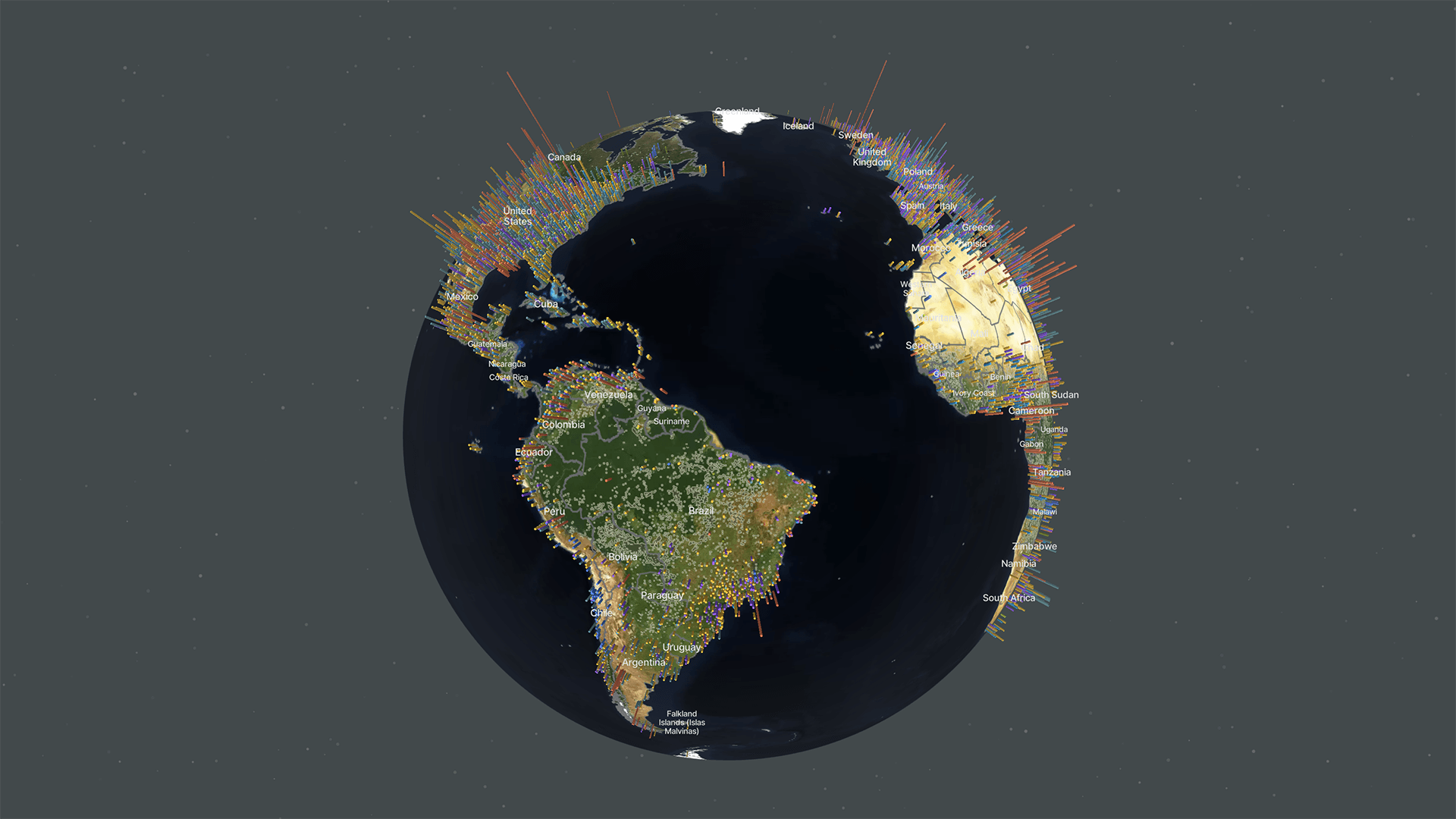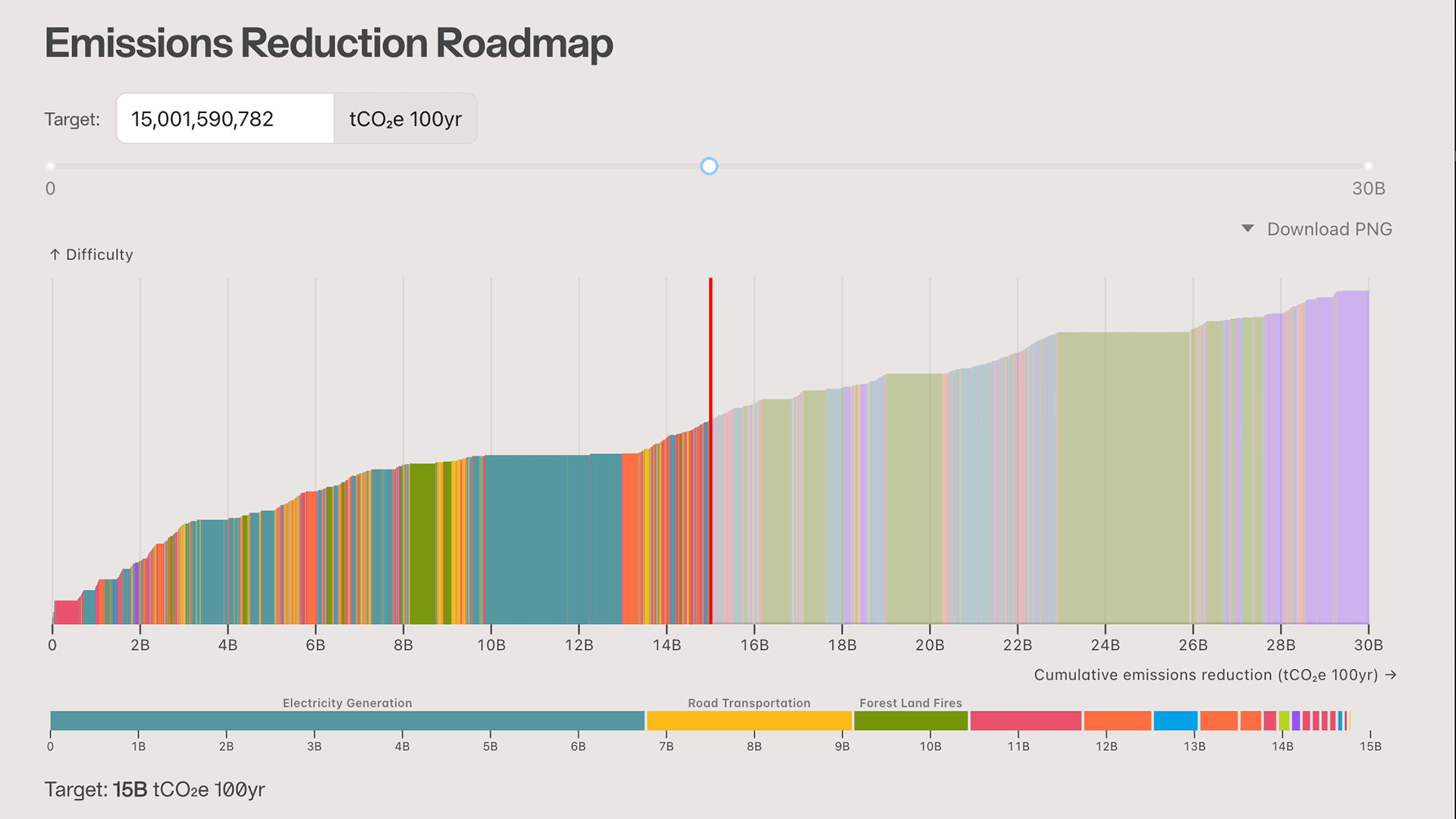Climate TRACE Begins Monthly Data Releases With New Greenhouse Gas Data Showing January 2025 Emissions Worldwide
March 28, 2025 – Today, Climate TRACE began reporting monthly greenhouse gas (GHG) emissions data with a lag time of only 60 days for every major GHG in every major sector and subsector, every country, state, more than 9,000 urban areas, and more than 660 million individual sources – making the Climate TRACE inventory the world’s most comprehensive, timely, and up-to-date database of greenhouse gas emissions.
Climate TRACE’s preliminary calculation of global greenhouse gas emissions for the month of January 2025 is 5.26 billion tonnes carbon dioxide equivalent (CO2e) – a 0.59% decline as compared to January 2024. Global methane emissions in January 2025 were 32.24 million tonnes – roughly the same as January 2024.
December 2024 (-0.02%) and January 2025 represent the first monthly declines in emissions – year over year – post-COVID and since the beginning of Climate TRACE’s monthly breakdown of greenhouse gas emissions data, which dates back to January 2021. As the Climate TRACE coalition gathers additional data on key sectors, these monthly data estimates will provide an early indication as to whether global emissions are beginning to peak. While our preliminary data indicate that the world is – ever so slightly – moving in the right direction, as we measure subsequent months, we will know more about whether this is a consistent trend or a one-off.



Staying Up-to-Date on Climate TRACE’s Monthly Emissions Data
On the last Thursday of every month, Climate TRACE will report the latest monthly emissions data available – meaning that data released at the end of March 2025 cover emissions through the end of January 2025. Each monthly data release will include the latest month’s data, as well as incremental adjustments and improvements to previous months’ estimates.
A summary of the latest data will be published at 9:00 am ET on the last Thursday of each month, and will include calculations of year-over-year changes in emissions by sector and among the top emitting countries, urban areas, and assets. In addition, complete tables of emissions summarized by sector, country, and top 100 urban areas will be included. The tables for January 2025 are available as a ZIP package of CSV files here.
The Climate TRACE website is home to all of the latest data. There, users can explore the inventory using the map, country inventory, comparison and ranking tools, or via download. All summarized data releases will be available in the ‘Data Release’ section of the News & Insights page. Additionally, a complete changelog and comprehensive methodology documents are available on the Climate TRACE GitHub.
Greenhouse Gas Emissions by Country: January 2025
Climate TRACE’s preliminary estimate of January 2025 emissions in China, the world’s top emitting country, is 1.54 billion tonnes CO2e, a decline of 17.4 million tonnes of CO2e or -1.1% as compared to January 2024.
Of the other top five emitting countries:
– Emissions in the U.S. declined by 1.704 million tonnes CO2e, or approximately -0.28%;
– In India emissions were also down slightly year over year, falling by 90,366 tonnes CO2e or -0.03%;
– In Russia emissions declined by 579,029 tonnes of CO2e or -0.18%;
– and Indonesia’s emissions declined by 392,293 tonnes of CO2e or -0.32%.
In the EU, which as a bloc would be the third largest source of emissions in January 2025, emissions declined by 1.8 million tonnes CO2e compared to January 2024, or -0.53%.
Greenhouse Gas Emissions by Sector: January 2025


Greenhouse gas emissions increased year over year in waste and manufacturing and decreased in transportatin, power and fossil fuel operations. Transportation saw the greatest change in emissions year over year, with emissions increasing by ~1.6%.
– Agriculture emissions were 537.39 million tonnes CO2e, a 0% change vs. January 2024;
– Emissions from buildings were 458.25 million tonnes CO2e, a 0% change vs. January 2024;
– Emissions from fossil fuel operations were 903.31 million tonnes CO2e, a -0.09% change vs. January 2024;
– Manufacturingemissions were 885.81 million tonnes CO2e, a +0.03% change vs. January 2024;
– Mineral extraction emissions were 21.73 million tonnes CO2e, a 0% change vs. January 2024;
– Power sector emissions were 1.36 billion tonnes CO2e, a -1.37% change vs. January 2024;
– Transportation emissions were 748.34 million tonnes CO2e, a -1.57% change vs. January 2024;
– Emissions from the waste sector were 199.35 million tonnes CO2e, a +0.26% change vs. January 2024.
Greenhouse Gas Emissions by City: January 2025
The urban areas with the highest total greenhouse gas emissions in January 2025 were Shanghai, China; Tokyo, Japan; New York City, USA; Seoul, South Korea; and Beijing, China.
The urban areas with the greatest increase in absolute emissions year over year were Ma'anshan, China; Anshan, China; Seoul, South Korea; Louxing, China; and Xiangtan, China. Those with the largest absolute emissions decline were Dortmund, Germany; Pohang-si, South Korea; Geumseong, South Korea; Swansea, United Kingdom; and Zhangjiagang, China.
The urban areas with the greatest increase in emissions as a percentage of their total emissions were Campo Largo, Brazil; Sobral, Brazil; Rybnitsa, Moldova; Litang, China; and Hpa-An, Myanmar. Those with the greatest decrease by percentage were Swansea, United Kingdom; Chonnae, North Korea; Kirovo-Chepetsk, Russia; Wenxi, China; and Pohang-si, South Korea.
For all updates to Climate TRACE country-, state-, city-, sector-, and asset-level data, visit climatetrace.org.
RELEASE NOTES
With the addition of January 2025 data, the Climate TRACE database is now updated to version 4.1.0. With this version, the database was updated to differentiate between fossil and non-fossil methane global warming potentials in the Intergovernmental Panel on Climate Change’s Sixth Assessment Report (IPCC AR6). Climate TRACE teams also updated their models for glass, lime, and textile manufacturing, as well as food, beverage, and tobacco production. 918 additional ports were added to the shipping sector, along with additional improvements to calculations for the sector. A detailed description of all sectors’ data updates is available in our changelog here.
To learn more about what is included in our monthly data releases and for frequently asked questions, click here. All methodologies for Climate TRACE data estimates are available to view and download here. For any further technical questions about data updates, please contact: coalition@ClimateTRACE.org.
To sign up for monthly updates from Climate TRACE, click here.
Emissions data for February 2025 are scheduled for release on April 24, 2025.
About Climate TRACE
The Climate TRACE coalition was formed by a group of AI specialists, data scientists, researchers, and nongovernmental organizations. Current members include Carbon Yield; CTrees; Duke University’s Nicholas Institute for Energy, Environment & Sustainability; Earth Genome; Former Vice President Al Gore; Global Energy Monitor; Hypervine.io; Johns Hopkins University Applied Physics Lab; OceanMind; RMI; TransitionZero; and WattTime. Climate TRACE is also supported by more than 100 other contributing organizations and researchers, including key data and analysis contributors: Arboretica, Carnegie Mellon University’s CREATE Lab, Global Fishing Watch/emLab, Michigan State University, Open Supply Hub, and University of Malaysia Terengganu. For more information about the coalition and a list of contributors, click here.
Media Contacts
Fae Jencks and Nikki Arnone for Climate TRACE


